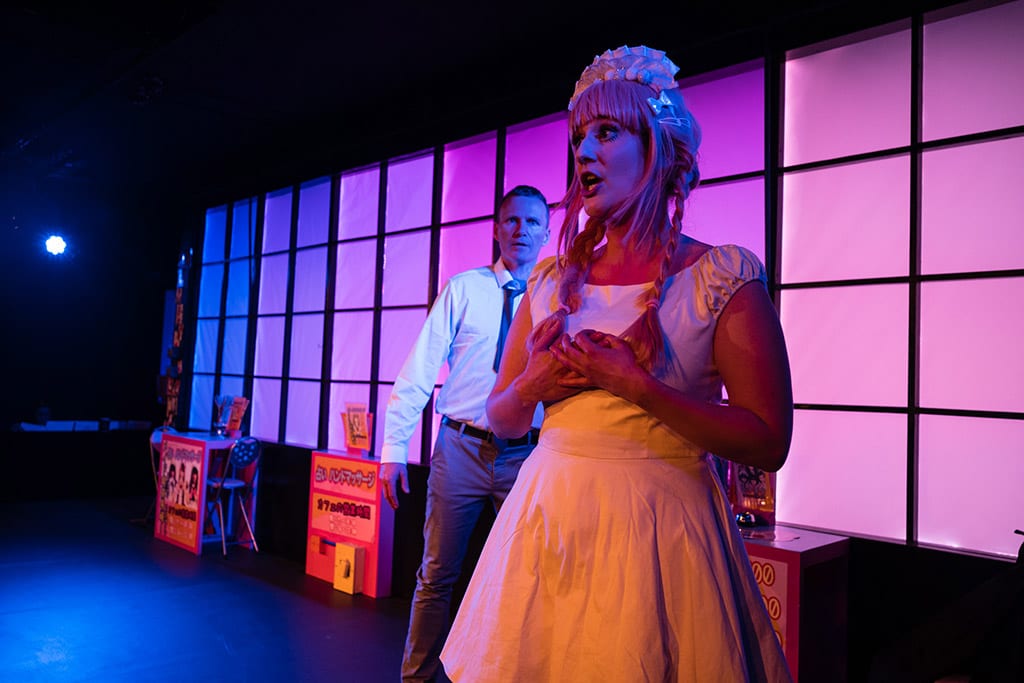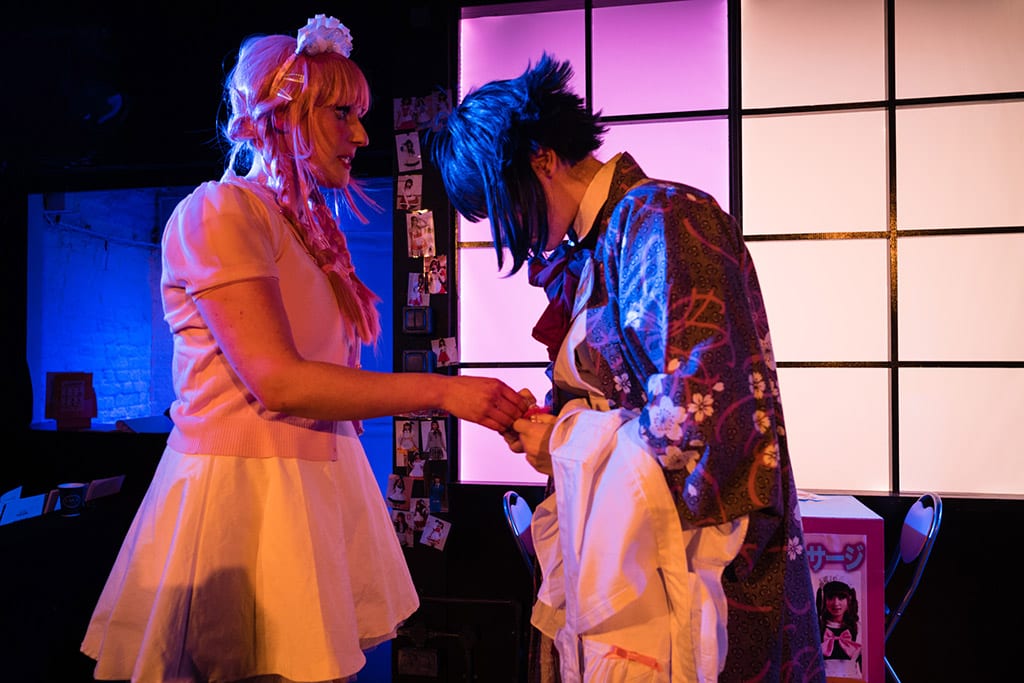The King’s Head theatre welcomes its audience into its intimate space, filled on this occasion with mesmerizingly emotional singing and acting. Stephanie Edwards’s soprano performance as Madam Butterfly is truly arresting, while Arthur Swan as American naval officer Pinkerton, David Jones as Consul Sharpless and Holly-Marie Bingham as fellow Maid waitress Suzuki, contribute fantastic voices and sensitive acting to the drama of the story: a young Japanese geisha is seduced by a visiting American naval officer but is left, clinging to the belief in their love and waiting for his return.
Directed by internationally-acclaimed opera director Paul Higgins and set in a contemporary Japanese cafe in Nagazaki designed by Luke W. Robson, the well-know opera has been given an exciting make-over and a radical interpretation for which the King’s Head is now famous. Part of an entire contemporary sub-culture in Japan since the beginning of the century, Maid Cafes offer their customers to be served by maids wearing costumes that represent fictional characters from manga, or Japanese comics, a practice which has been creatively interpreted by costume designer Emily May Sions and hair and make-up assistant Christina Semertzaki.
The maids in these “Cosplay Restaurants” now fulfil a similar role in Japanese society that Geishas would have played in the past, even more so as there is a troubling link with the sex industry. Unfortunately for the state of social affairs, but fortunately for the depth of the adaptation, contemporary references do not stop here, particularly when it comes to the fate of Madam Butterfly’s and Pinkerton’s son at the end of the play, heart-breaking as ever.
In the cosy space of the King’s Head, both the music and decor have been kept to their bare essentials, a sobriety which enables a refreshing focus on the telling of the story and the magnificence of the music in one of the finest lyrical and poignant opera tragedies; a tale of love, longing, and ultimately loss and death. In this respect, the pianist and cello player contribute a recital which would stand on its own two feet, while the contrasted lighting and colour change of the typically-Japanese windows follow the changing mood of the unfolding drama in a subtle manner.
Extremely powerful moments in the performance include the most extended and exquisite love duet Puccini ever wrote, and Madam Butterfly’s longing for Pinkerton’s future homecoming, what has now become one of the most popular aria of the 20th Century.




